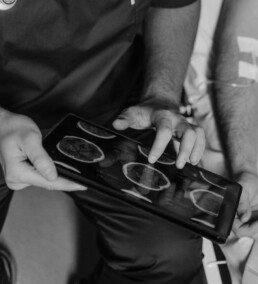The medial temporal lobe (MTL) is primarily thought to be responsible for memory and cognition. However, several functional neuroimaging studies have shown the involvement of this brain region in both the response to experimental pain in healthy individuals and in patients with chronic pain.
Interestingly, the well-known case of patient H.M., who underwent bilateral MTL resection for epilepsy, had reported an unusually high tolerance for heat pain. These previous findings suggest the involvement of the MTL in nociception and pain modulation, in addition to its well-recognized role in memory.
To further explore the involvement of the MTL in nociceptive processing, researchers at the University of Toronto, led by UTCSP members Lizbeth Ayoub and Dr. Massieh Moayedi, conducted two separate meta-analyses of fMRI studies of pain that indicated MTL engagement, and one original empirical study. The first meta-analysis consisted of studies in healthy individuals undergoing experimental pain and the second consisted of chronic pain patients. The first meta-analysis demonstrated increased activation after a pain-inducing stimulus in the right anterior hippocampus, parahippocampal gyrus, and amygdala compared with each subject’s own, non-painful baseline condition.

The second meta-analysis demonstrated that chronic pain patients demonstrate decreased activation in the right anterior hippocampus compared to healthy individuals. Following the results of these meta-analyses, the authors conducted their own resting-state fMRI study in 77 patients with chronic low-back pain and 79 matched healthy controls, specifically focusing on the functional connections between the right anterior hippocampus and the rest of the brain. They found that patients with chronic low-back pain have significantly decreased functional connectivity between the right anterior hippocampus and the medial prefrontal cortex compared to healthy individuals. Overall, this study points to the important role of the MTL, and in particular the right anterior hippocampus, in both acute and chronic pain.

